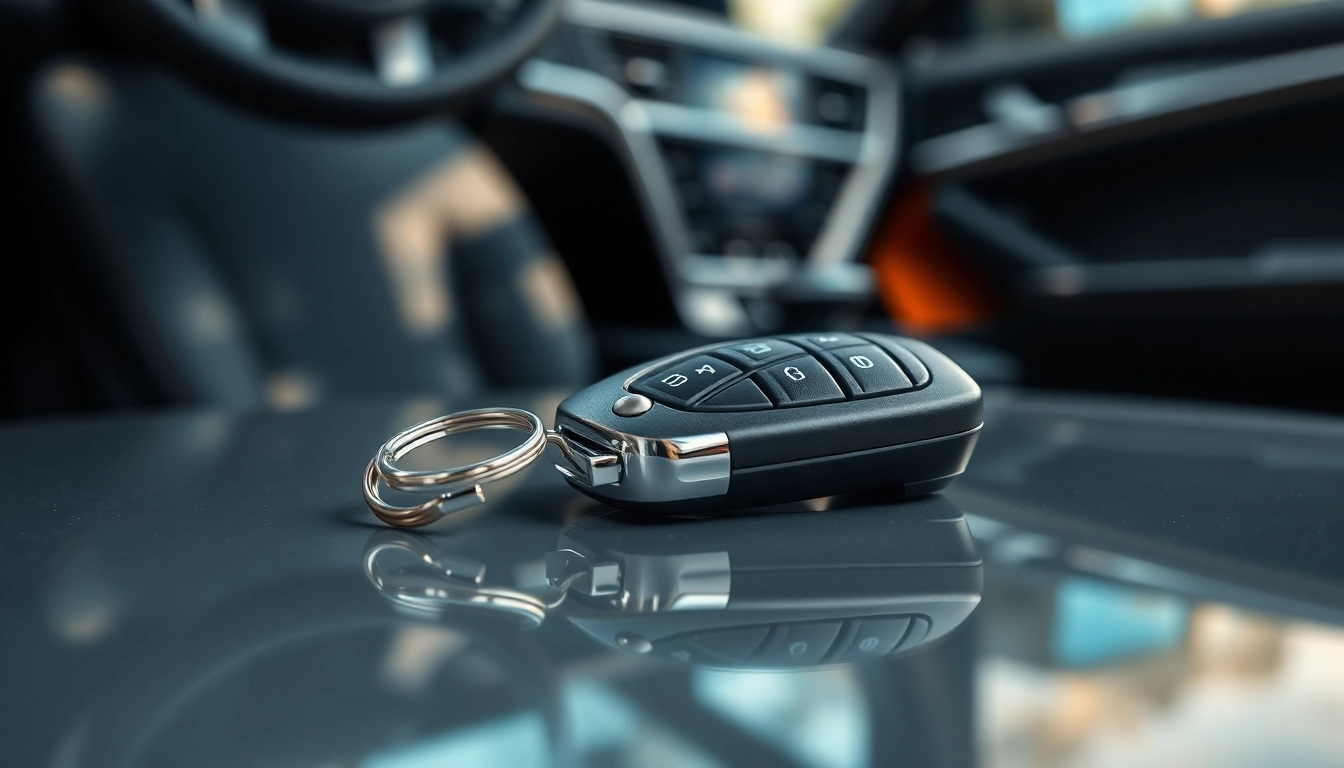The Rise of Keyless Carkeys
As the automotive industry continues to innovate, one of the most significant advancements has been the development of Keyless Carkeys. Their rise signifies a pivotal move away from traditional car keys, enhancing the way we interact with our vehicles. This article delves into the history, evolution, and future of keyless car technology, highlighting its convenience, security features, and implications for vehicle owners.
1. Historical Context of Car Keys
The journey of car keys began with simple mechanical designs, evolving through various stages to accommodate enhancing security and convenience. Initially, standard metal keys provided basic functionality, solely focused on unlocking doors and starting engines. However, as automotive technology progressed, so did concerns about security, leading to innovations such as cut keys, which offered increased resistance to unauthorized duplication.
With the introduction of electronic ignition systems in the late 20th century, car keys became more complex, incorporating transponder chips that communicated with the vehicle’s onboard computer. This technology notably reduced car theft rates but also paved the way for the next significant leap—the development of keyless entry systems.
2. Evolution to Keyless Systems
The first iterations of keyless entry systems became prevalent in the 1990s, utilizing infrared signals to unlock doors without the need for a physical key. These systems were basic but demonstrated the potential benefits of eliminating traditional keys. Manufacturers began to explore more sophisticated applications, leading to the integration of remote keyless entry and the subsequent launch of keyless ignition systems.
Emerging technologies now allow vehicles to detect when a driver is nearby, unlocking the doors automatically. This advancement transforms the driving experience, as users no longer need to fumble for keys to access their cars.
3. Advantages Over Traditional Keys
The move towards keyless technology not only enhances convenience but also offers several notable advantages over traditional keys:
- Convenience: Drivers can enter their cars with just a push of a button, streamlining the transition from approaching the vehicle to getting inside.
- Enhanced Security: Keyless systems often employ rolling codes and other advanced security measures, making it more challenging for thieves to replicate.
- Durability: Key fobs are typically more durable than traditional keys, reducing wear and tear often associated with physical keys.
How Keyless Carkeys Function
1. Components of Keyless Entry Systems
Keyless entry systems consist of several key components that work together to provide seamless access to the vehicle:
- Key Fob: This portable device contains all the electronic circuits necessary for communication with the car, such as a battery and transponder chip.
- Receiver Unit: Located within the vehicle, this system receives signals from the key fob and processes them to unlock doors or start the engine.
- Electronic Control Unit (ECU): This component manages the vehicle’s security features, ensuring that the communication between the key fob and the car is secure and efficient.
2. Signal Transmission and Security Features
Keyless systems utilize radio frequencies to communicate between the key fob and the vehicle. Generally, a short-range radio transmitter and receiver work within a distance between 5 to 20 meters. Here’s how it unfolds:
- The driver approaches the vehicle with the key fob in proximity.
- The car’s receiver detects the key fob’s signal and processes the input, allowing the doors to unlock.
- Once inside, the driver can start the engine by simply pressing a button.
Security features are integral to keyless entry systems. Advanced protocols like rolling codes or encrypted signals significantly enhance protection against key spoofing and other unauthorized access attempts. These measures ensure that even if a signal is intercepted, it cannot be reused by potential thieves.
3. Troubleshooting Common Issues
While keyless entry systems provide remarkable convenience, they can also encounter issues. Here are common problems and their solutions:
- Battery Failure: If the key fob isn’t functioning, check the battery. Replacing it with a fresh one can resolve issues.
- Signal Interference: Proximity to other electronic devices may cause signal interference. Ensure there are no devices nearby that could disrupt communication.
- Loss of Synchronization: Occasionally, key fobs can lose synchronicity with the vehicle. Consult the user manual for reprogramming steps.
Benefits of Using Keyless Carkeys
1. Convenience and Efficiency
The primary allure of keyless carkeys is their unparalleled convenience. With keyless entry, drivers avoid the routine of searching for keys, particularly in situations where hands are full. The technology simplifies the process of entering and starting the vehicle, enhancing the overall efficiency of vehicle operation.
2. Enhanced Security Measures
In addition to convenience, keyless entry systems implement sophisticated security measures that significantly reduce the risk of theft. The rolling code technology utilized by keyless systems changes the signal each time the key fob is used, rendering potential duplication virtually impossible. Additionally, integrated immobilizers prevent unauthorized engine start-ups, further bolstering vehicle security.
3. Integration with Smart Technologies
Many modern vehicles with keyless carkeys also feature smart technology integration, allowing seamless connection with smartphones and other devices. This connectivity facilitates features such as remote locking, unlocking, and even engine starting through a smartphone app. These developments represent the growing trend towards smart vehicles, which not only enhances convenience but also elevates user experience.
Keyless Carkeys and Vehicle Manufacturers
1. Adoption by Major Brands
Numerous manufacturers have embraced keyless carkeys, integrating this technology across various models. It has become commonplace in luxury brands, where seamlessly elegant features align with modern luxury experiences. However, even mainstream manufacturers are adopting this approach, recognizing the appeal among consumers for convenience and security.
2. Unique Features by Manufacturer
Each manufacturer differentiates their keyless entry systems through unique features. For instance, some brands might include proximity sensors for automatic locking, while others integrate auxiliary features such as personalized settings that adjust climate control or seating preferences upon entry. These customizations enhance the user experience and underscore the value of keyless technology.
3. Future Trends in Keyless Technology
The future of keyless carkeys appears bright, with emerging technologies such as biometric security features gaining traction. These systems might utilize fingerprints, facial recognition, or even voice commands for vehicle access. Moreover, as vehicle-to-vehicle (V2V) communication becomes more sophisticated, the integration of keyless technology within an interconnected automotive landscape is bound to revolutionize how drivers interact with their vehicles.
Maintaining Your Keyless Carkeys
1. Best Practices for Longevity
To ensure the longevity of keyless carkeys, users should adopt several best practices:
- Avoid Dropping: Since key fobs contain sensitive electronics, they should be treated carefully to prevent internal damage.
- Regular Battery Replacement: Replacing the battery every year or two can prevent unexpected failures.
- Store Properly: When not in use, store key fobs in a protective case to minimize physical wear and tear.
2. Replacement and Programming Options
If a key fob is lost or damaged beyond repair, replacement options are readily available. Vehicle owners can obtain new fobs through dealerships or alternative providers. Many dealerships offer programming services, which typically involve synchronizing the new fob with the vehicle’s security system. Alternatively, some owners may opt for DIY programming, which can considerably reduce costs.
3. Understanding Battery Life and Management
Battery life in key fobs varies based on usage and the specific model of the fob. On average, key fob batteries last from 1 to 3 years. Users should monitor battery performance, keeping an eye out for signs of weakening, such as decreased range or unresponsiveness. Managing the fob responsibly, such as avoiding mechanical switches or excessive handling, can ensure optimal battery life.







